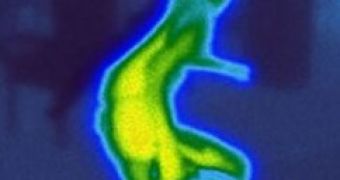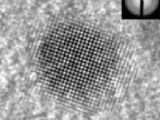Quantum dot photodetectors have just taken a very important step towards large scale, low-cost applications. The fields where this new imaging technique would be invaluable are medical and biological imaging, environmental and chemical monitoring, night vision and infrared imaging from space.
A team of researchers at Northwestern University, made up of Manijeh Razeghi, Walter P. Murphy Professor of Electrical Engineering and Computer Science and director of the Center for Quantum Devices, are getting very close to developing these high-performance imaging techniques without having to maintain the extremely low surrounding temperatures used today.
For now, infrared photon detectors need a temperature of around 77 Kelvins to operate, which greatly increases the costs, size and power consumption to the imaging systems, therefore limiting their usability.
Intensive experiments have been carried out to see if quantum dots could improve the devices, due to both their size (about 10 nanometers) and to their unique property of three-dimensional confinement, which can enable higher operating temperatures when used in infrared detector design.
"The development of an infrared photon detector that can operate at higher temperatures will enable the use of cheaper, lighter and more efficient cooling methods in the design of infrared imaging systems," said Razeghi. "This will allow the use of infrared detectors in a much wider range of applications."
Their breakthrough consists in the development of a QDIP that operates at room temperature with a peak detection wavelength in the technologically important middle wavelength infrared window. The main advantage is the fact that wavelengths between 3 and 5 microns are not absorbed by Earth's atmosphere.
The new QDIP is made up of a hybrid indium arsenide quantum dot and an indium gallium arsenide quantum well structure grown on an indium phosphide substrate, having achieved the record specific detectivity and quantum efficiency at 150 Kelvins, more that twice the temperature of today's devices.
Already applying their work to a practical device, they constructed an infrared camera which demonstrated thermal imaging at temperatures up to 200 degrees Kelvin, the highest ever for such a device.

 14 DAY TRIAL //
14 DAY TRIAL // 
